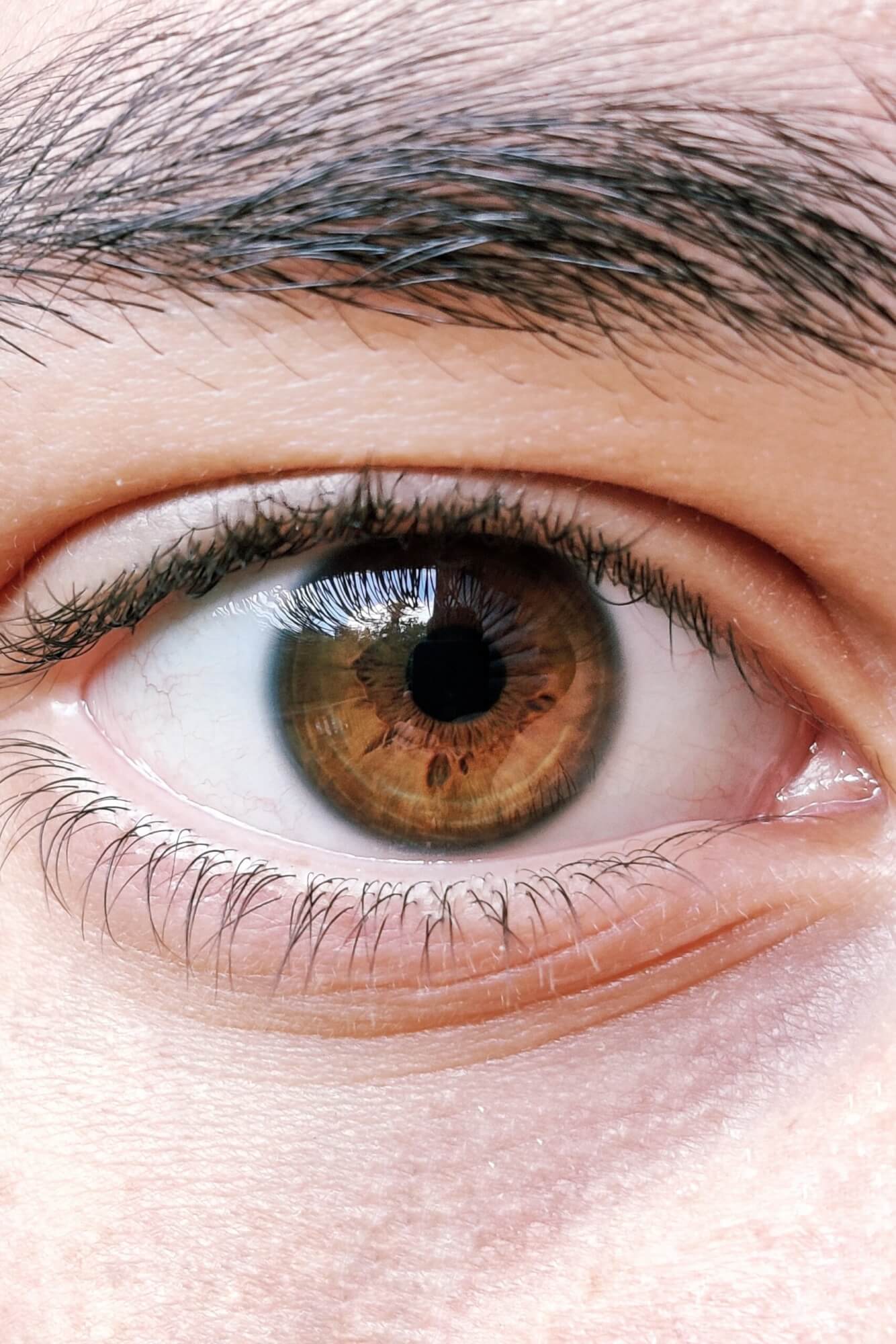Compared to their giant bodies, the eyes of whales are quite small. It is often said that the eyes are the window to the soul. If you looked into the gaze of one of these gigantic sea creatures, what colour would you see?
Located on either side of the head, their oval eyes have lids, a thick cornea and a rigid sclera (fibrous outer covering of the eyeball). The eyeballs also have an intricate network of blood vessels and massive eye muscles to protect them from the high pressures of the depths and frigid waters. Their monochromatic vision probably only allows them to see the world in shades of one colour, either red or green depending on the species. Although they don’t see a wide palette of colours, their eyes do seem to come in a multitude of hues!
More colourful than they appear!
It turns out that the eyes of cetaceans come in a variety of shades. All cetaceans have a brown iris, but this is believed to vary from dark reddish brown to grey or even black. This iris is typically surrounded by a very pale ring that can range from very dark blue to white. Some individuals occasionally even show a two-tone ring. Why then do they seem to have such dark eyes? It turns out that when the animal is relaxed or lighting is sub-optimal, the majority of the eye is hidden by the eyelid such that only the iris and a small part of the ring are visible. They then appear much darker than they actually are! The shape of the pupil is also rather interesting. In the dark, the pupil is long and vaguely oblong, but as it grows lighter, the operculum lowers over the pupil until it becomes horseshoe-shaped or with just two small pinholes.
In the white of the eyes
In both humans and cetaceans, melanin is the pigment that influences the colour of the iris. If present in sufficient quantity, the eyes will be dark, otherwise they will be pale. Although there are a multitude of colours in humans, it is believed that around 80% of us have brown eyes. Our eyes, however, with their coloured iris on a white background, seem to be quite unique. Although scleral depigmentation has been observed in certain primates like the gorilla, bonobo, and Sumatran orangutan, the sclera is usually somewhat darker in these animals. For the rest of the animal kingdom, the fundus of the eye is generally dark in colour. The diversity of iris hues is another characteristic unique to humans. In humans, eye colour is believed to be a selection criterion when it comes time to choose a sexual partner. It is therefore possible that the colour of the iris and depigmentation of the sclera are the result of sexual selection. Although a gaze into the eye may be alluring for humans, it does not seem to have the same appeal throughout the animal world.







